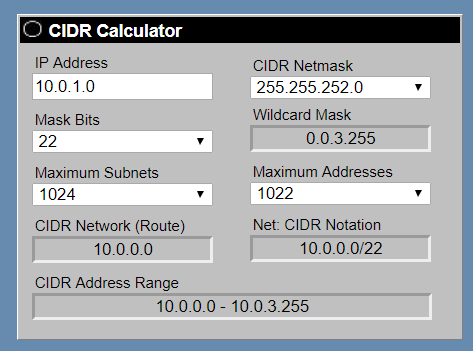Subnet Network Mask Calculation
Question
You have a requirement to create a subnet which will have the ability to host 1000 addresses.
Which of the below network masks would you use to ensure that the ability to host this many IP addresses is as accurate as possible.
Answers
Explanations
Click on the arrows to vote for the correct answer
A. B. C. D.Answer - B.
You can use any CIDR calculator available online to see the number of subnets and host addresses when you use different network masks.
A snapshot of one such site is given below.
An example site for calculating CIDR blocks is given below.
http://www.subnet-calculator.com/cidr.php
To determine the network mask required to support 1000 IP addresses, we need to consider the number of bits required to represent 1000 addresses. In binary notation, 1000 is 1111101000. We need to count the number of bits set to 1, which is 10. Therefore, we need a subnet mask that has at least 10 bits set to 1.
The network mask is represented as the number of bits set to 1 in the subnet mask. For example, a subnet mask of 255.255.255.0 is represented as /24 because it has 24 bits set to 1. The higher the number of bits set to 1 in the subnet mask, the fewer IP addresses are available in the subnet.
The correct answer is B. /22. A /22 subnet mask has 22 bits set to 1, which provides 1022 IP addresses. This is the closest match to the required 1000 IP addresses, and it provides a buffer for future growth.
Option A. /21 provides 2046 IP addresses, which is more than required, and it may result in wastage of IP addresses.
Option C. /23 provides 510 IP addresses, which is not enough to accommodate the required 1000 IP addresses.
Option D. /24 provides 254 IP addresses, which is not enough to accommodate the required 1000 IP addresses.
